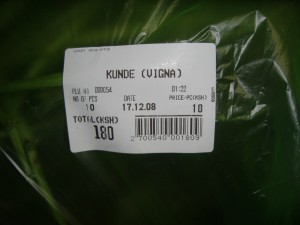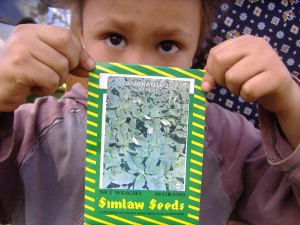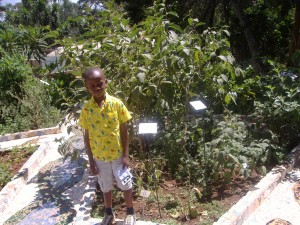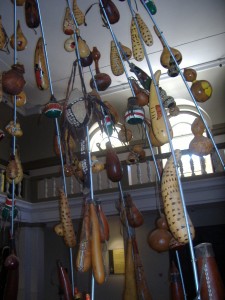We’ve nibbled the new New Agriculturist but not highlighted specifically, I think, the fact that it has a special on bananas. And African bananas in particular. Coincidentally, there’s a paper out in Food Chemistry on genetic variability in carotenoid content within Musa .
Videos on traditional food systems
The Centre for Indigenous Peoples’ Nutrition and Environment (CINE) based in McGill University, Canada, responded to requests from indigenous leaders from around the world to help stop loss of traditional food system knowledge with research and community-driven activities that bridge the generation.
This series of videos presents highlights from 12 indigenous community areas in 9 countries, and is intended to con tribute to the evidence base used to make global policies to protect Indigenous Peoples’ food resources and promote good health.
Thanks to Lois Englberger for the tip.
Traditional African vegetables hit the mainstream
It’s not really all that long since we brought together researchers on that overlooked portion of African agrobiodiversity that is its traditional vegetables for one of the first ever times. I wonder how many of us ever thought that in little more that 10 years we would be able to buy terere and managu and the like wrapped in plastic and barcoded in supermarkets in Kenya:

Or indeed buy nicely packaged and labelled seed from small agricultural suppliers in places like Limuru:

Preparation is time-consuming and fiddly, sure:

But the taste and nutrients are worth it, as more and more people are finding out. We had some Amaranthus for Christmas lunch, from grandma’s shamba. Can’t get much more mainstream than that.
(Not much) agrobiodiversity on display in Nairobi museum
The main building of the National Museums of Kenya in Nairobi has had a facelift, courtesy of the EU. Pretty good job on the outside, but the new exhibits were a bit of a disappointment.

There’s a big hall about Kenya’s animals, of course, and another series of displays about its cultures, arranged by life-stages (birth, youth, adolescence, initiation: you get the picture), though this includes very little about agriculture:

But there’s nothing at all on the country’s ecosystems and protected areas, and nothing on its plants, at least inside the building (apart from a display of an herbarium specimen in the small hall describing the museum’s history). There is a little botanic garden dedicated to medicinal plants (arranged by family, the wisdom of which is debatable), but this misses the opportunity of describing the Amaranthus on display as not just a medicinal but also a nutritious traditional leafy green (see my next post):

However, the entrance hall does have a terrific display of cucurbit diversity:

These bottle gourds are used by the Maasai and other pastoralists to store water, milk, blood, and mixtures thereof. Here’s a close-up:

Say it ain’t so
A CREDIT paper now out in Food Policy uses some fancy maths to suggest that the health and nutritional status of Rwandese rural people is more dependent on how much beans, sweet potatoes and other crops they produce, rather than on their income. That’s because of “market imperfections,” which is a polite way of saying that there are no markets. A sobering thought for those development agencies which pin all their hopes on the private sector. The author doesn’t discuss this, but I would have thought the dataset is a suitable one to investigate the relationship between dietary diversity (using the proxy of production diversity) and health. Tragically — and actually rather surprisingly — output of local beer has a significant negative effect on nutrition and no effect on health.